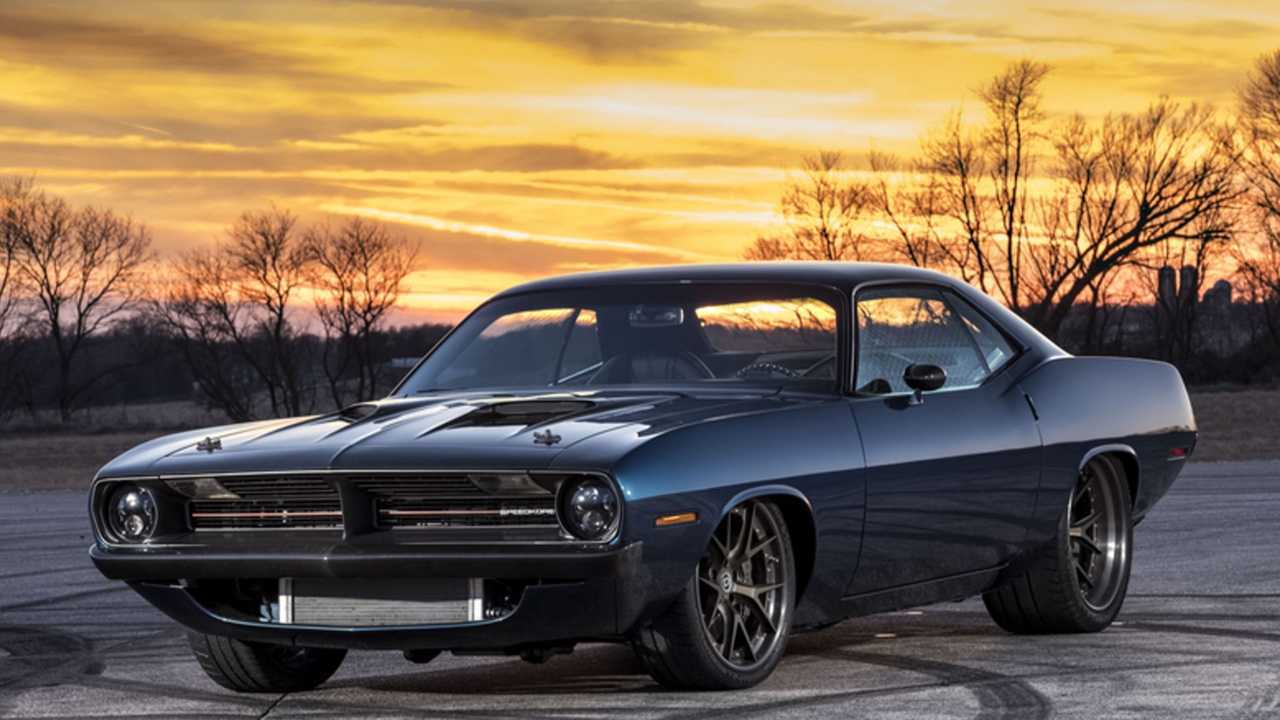Learn what we know, what we don’t, and what happens next.
Any time a celebrity does pretty much anything, it’s news - there are paparazzi literally following movie stars and musicians around as they shop or walk from their car to the gym. When one of the biggest comedians alive today is in a horrific car accident, that kind of sensational news spreads like wildfire. Unfortunately, quite a bit of misinformation is floating around about the Kevin Hart crash, so it’s time to clear a few things up.
First of all, Hart was not driving. Yes, the modified 1970 Plymouth ‘Cuda, nicknamed Menace, is his, purchased as a birthday present over the summer, but he handed the keys to Jared S. Black, the fiancé of Rebecca Broxterman, Eniko Parrish's (Hart's wife) trainer, sometime before the crash happened at about 1 a.m.

Hart was in the front passenger seat, Black was of course in the driver’s seat, and Broxterman was in the backseat area. What’s interesting is, multiple reports say Menace has a rear seat delete. Images from Speedkore, the shop which built Menace, clearly show the rear seats have been replaced by cushioning that almost exactly mimics seats, but they’re unusable since what looks like storage lids are embedded in both bottom cushions. It’s unknown if Broxterman was sitting on the transmission tunnel, the floorboards, or something else at the time of the accident.
Image credit: SpeedKore
The seating positions possibly played a factor in the injuries. Hart and Black both had to be hospitalized. We know Hart sustained back injuries, and some reports indicate Black did as well. After Hart was released from the hospital on September 11, reports started claiming he suffered three fractures in his spine and couldn’t walk for a week, although so far that information hasn’t been confirmed. Seeing the crushed roof on the car, it’s not hard to imagine why. Broxterman, on the other hand, walked away without any serious injuries.
Image credit: SpeedKore
Menace isn’t a car for an amateur to drive. It has a 6.4-liter Hemi V8 with a 2.9-liter Whipple supercharger strapped to it. Speedkore custom-fabbed headers and an exhaust system for the car. The result is a peak 720-horsepower, all channeling through the drivetrain to the rear wheels. While the chassis was reinforced and a BAER six-piston extreme brake package was installed, helping with a driver maintaining control, keep in mind Menace was still quite potent. Lightweighting by swapping out multiple body panels for carbon-fiber copies increased the wild, unbridled nature of the vehicle. At least when it was featured for SEMA, the car wore Michelin Pilot Sport tires.
Anyone not familiar with the car, especially its limits, could have easily had it get out from under them, leading to something like this accident. We don’t know if Black had ever even been in the car before, let alone drove it, but there’s a possibility he wasn’t the least bit familiar with Menace.

Where the accident took place, Mulholland Highway, is notoriously dangerous. The road is nicknamed “The Snake” because of its many twists and turns as it winds through the western Santa Monica Mountains, connecting US Route 101 in Calabasas to Highway 1 by Malibu. The technical nature of the road and its proximity to Los Angeles makes it popular for thrill seekers in performance cars and motorcycles.
Thanks to this, and people who struggle to navigate the roadway in normal conditions, crashes are frequent. It’s not really the ideal place for someone unfamiliar with a high-powered muscle car to first test it out.

The issue of safety equipment, or the lack thereof, has been an increasing focus of reports after the crash. Menace had no seatbelts when the build was finished ahead of the 2016 SEMA show, and nothing indicates they were installed afterward. In fact, reports indicate the California Highway Patrol believes the serious nature of Hart’s and Black’s injuries would have been prevented by the proper use of seatbelts.
Unnamed experts have spoken to the media, giving their opinion that the modified 1970 Plymouth ‘Cuda should have been outfitted with nothing less than five-point safety harnesses and a full roll cage, like a bona fide race car. Without knowing the nature of both men’s injuries or examining the car, it’s impossible to state whether that’s true or not. However, CHP is performing a full investigation which includes not only examining the skid/burnout marks on the road, but also taking Menace apart piece by piece to determine if a mechanical failure contributed to or even caused the crash. Indications are that investigation won’t likely come to any conclusions until at least late September.
The end result is that this crash could mean sweeping legislation in California, changing classic cars and how they’re modified in the future. While it’s all talk right now, there are calls for at minimum mandating all vehicles, no matter how old, have seatbelts or harnesses installed.
This sentiment might be motivated by a noble cause to keep people safe, but can you imagine those classic cars worth millions of dollars at Pebble Beach being drilled into and having gaudy seatbelts installed? Talk about ruining not only the historical nature of those vehicles, but also the aesthetically-pleasing aspect. Considering so many people drive classic cars responsibly, it’s understandable why there would be outrage at such a law. Also, California laws are often adopted by other states, so these new regulations could start to filter throughout the country.

Image credit: SpeedKore
SpeedKore is a highly respected, well-established shop based in Grafton, Wisconsin. It regularly builds restomod classic muscle cars that really push the performance envelope. Among the customers SpeedKore boasts is celebrities like Robert Downey Jr. and Chris Evans, with no other reports of accidents involving cars built by the company.
Photo credits: Instagram, Twitter, and SpeedKore




